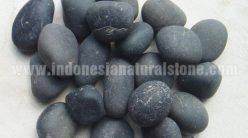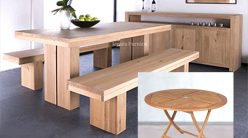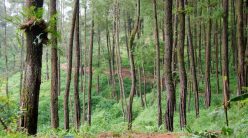wildlifemanagement.info/publications
Six species of swallows occur in Alberta. Most have similar life histories and requirements for food and water. Only cliff and barn swallows regularly build mud nests on buildings and other structures. This habit occasionally causes problems. Cliff swallows can be a nuisance because they nest in large colonies of up to several hundred birds. Other swallows tend to nest in smaller colonies or in single pairs and consequently do not usually cause a major problem.
The barn swallow is the only swallow with a deeply-forked tail. The cliff swallow has a square tail. You can also identify a cliff swallow by its rust-colored throat and rump, and white forehead.
Traditionally, cliff swallows nested on cliffs, canyon walls and vertical banks close to food and water. Cliff swallows have increased in numbers and expanded their range because they now nest on man-made structures.
Swallow nests are cup or ball shaped. They are built with pellets of mud and are lined with grass, hair or feathers. One nest contains between 700 and 1,400 pellets, each representing one round trip to a water source as far away as 0.8 km (0.5 mile). Swallow nests are almost as hard as concrete and adhere well to building walls.
On buildings, the first nests usually are at the highest point possible, with other nests attached below. Swallows may build more than one nest per season. Even unmated birds will build nests. If eggs or nests are destroyed swallows will rebuild.
Damage
Swallows build nests on open walls on houses, barns, buildings and even idle machinery. They also whitewash and stain structures and foul feed and water with their droppings. Sparrows often use abandoned nests of cliff swallows and create additional problems.
Control
Legal restrictions – Swallows are protected by international treaty. You cannot destroy or remove their nests and eggs except under a damage permit from Alberta Fish and Wildlife.
Nest Removal – Swallows are strongly attached to their nest sites, particularly in areas where birds have nested before. Removal of nests will not deter birds from rebuilding. Swallows will rebuild nests that are destroyed by wind and rainstorms; they will do the same if you knock a nest down with a broom or water hose.
You might discourage birds from nesting if nests are destroyed for several days in succession. However, swallows usually return to the same nest location each year, so you will have to do the same thing each year unless measures are taken to permanently discourage nest construction.
Exclusion – Exclusion of birds from nesting sites can be a long-term preventive measure. Swallows can be excluded from potential nest sites with barriers made from plastic sheeting, vinyl strips or fine-mesh wire. Nylon or wire mesh size should be 1.3 to 1.9 cm (0.5 to 0.75 in.) but 2.5 cm (1 inch) mesh is adequate.
Nets or other barriers must be installed before swallows arrive. After the fact exclusion can be expensive, time-consuming and ineffective.
Barriers, nets and plastic sheeting can be unattractive if they are not properly installed. To maintain building decorum and to effectively exclude swallows, be sure that all nets, plastic stripping and sheets are taut, neat and follow building contour and form. This will also maximize the benefit of barrier materials and devices. Loose or poorly fitted nets or other flexible material will have pockets or wrinkles that could trap or entangle birds, as well as windblown litter and debris.
The type of barrier you use will vary according to building shape and size and the degree of permanence required. Temporary barriers may be supported by tape, garbage bag ties, thumbtacks or staples. More elaborate rate methods involving rust resistant picture hooks or cup hooks can support permanent barriers. Hooks can also be used for temporary barriers.
Wooden dowels, laths and metal rods can be used to support nets. They can be attached by hooks or nailed directly to building surfaces. A power tool can be used to nail or screw net supports to concrete or cement surfaces.
Recommended swallow barriers are shown below.
Other devices and techniques
Most chemical repellents and mechanical scare devices are not effective in controlling swallows. Sticky- type repellents only improve nest adherence and make it easier for birds to construct their nests on buildings. Scare devices such as bird models, lights or noisemakers are usually expensive, impractical or ineffective.
Building design does influence nest-site suitability for swallows. The width of the overhang (i.e. soffit) is a key to site suitability. Swallows prefer to be sheltered by the eaves of a building. Swallows will generally not build nests where the overhang is less than 1 cm (6 inches). Nest construction often begins at a 90 0 corner at the junction of the vertical wall and overhang.
The surface of building materials is also important. Smooth metal or slick, smooth-painted surfaces are rarely used by swallows.
Net or wire attachment – Net or wire should extend to the outer edge of the eaves and far enough down the side of the building so that birds are fully exposed to the elements.
Curtain barrier – Hang a curtain of net, plastic or aluminum foil
from a wire or lath attached to the soffit 7.6 to 10 cm (3 to 4 inches) from
the wall and extending downward about 46 cm (18 inches).
Metal projections – Place two or three rows of metal spines or
“porcupine quills” 7.6 to 10 cm (3 or 4 inches) in length where wall and
eaves of roof join. Porcupine quills are available from commercial pest control
companies. The metal projections should be placed along the entire length of the wall.
Concave panel – Fibreglass, plastic or other easily molded smooth surfaced material
should be attached to the eaves and wall to form a smooth concave surface.
Slick surfaces – Use waxed paper or other slick water-proof surfaces to discourage
nesting. Paint that dries to a slick, hard surface can be applied to walls and eaves that already
have smooth surfaces. Paint as much of the eaves and walls as possible.
Information prepared by:
John Bourne
Regional Supervisor,
Problem Wildlife
Vermilion





